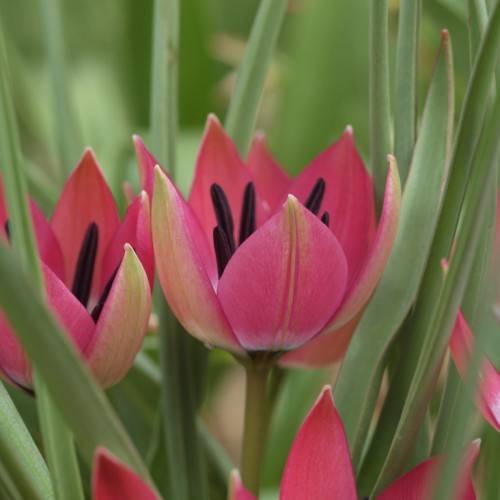
miscellaneous tulip
Tulipa 'Little Beauty'
Cycle:
Perennial
Watering:
Average
Hardiness Zone:
3 - 8
Flowers:
Flowers In Spring
Sun:
Full sun
Leaf:
Yes
Growth Rate:
Low
Maintenance:
Low
watering
Tulipa 'Little Beauty' should be watered once a week with about 2 to 3 cups of water. The soil should be damp but not soggy. It is important to avoid over-watering, as too much can cause the bulb to rot. When the soil starts to feel dry, it's time to water again. It is also a good idea to test the moisture level before watering. In the winter months, it is best to water less, maybe once every 2 weeks, as the plant is dormant and won't need as much water.
sunlight
Miscellaneous tulips such as the Tulipa 'Little Beauty' should receive at least 6 hours of direct or filtered sunlight per day. A south-facing window that provides a moderate amount of sunlight during the midday is ideal for these plants. While tulips can tolerate some shade or indirect sunlight, they respond best when they receive more sun than shade. When the weather is especially hot, miscellaneous tulips should be provided some form of light shade in order to prevent the leaves from burning and wilting. This can be achieved by placing them farther away from the window or providing them with a sheer, light-diffusing curtain.
pruning
Miscellaneous tulip (Tulipa 'Little Beauty') should be pruned once the flowers fade and the foliage begins to lose its color. Pruning should occur during late summer or early fall and, if necessary on a yearly basis, may be repeated. Generally, lasting no longer than the tail end of the blooming season, pruning will keep the plants’ shape and height in check. The pruning should be to remove foliage that has dried or developed unsightly yellow spots. It is important to remove any deadheads during this time as well, as it can improve the overall look of the plant. Additionally, cutting back on spent flowers will help encourage new growth. Additionally, pruning should only be done when the weather is dry to minimize damage and infection.
